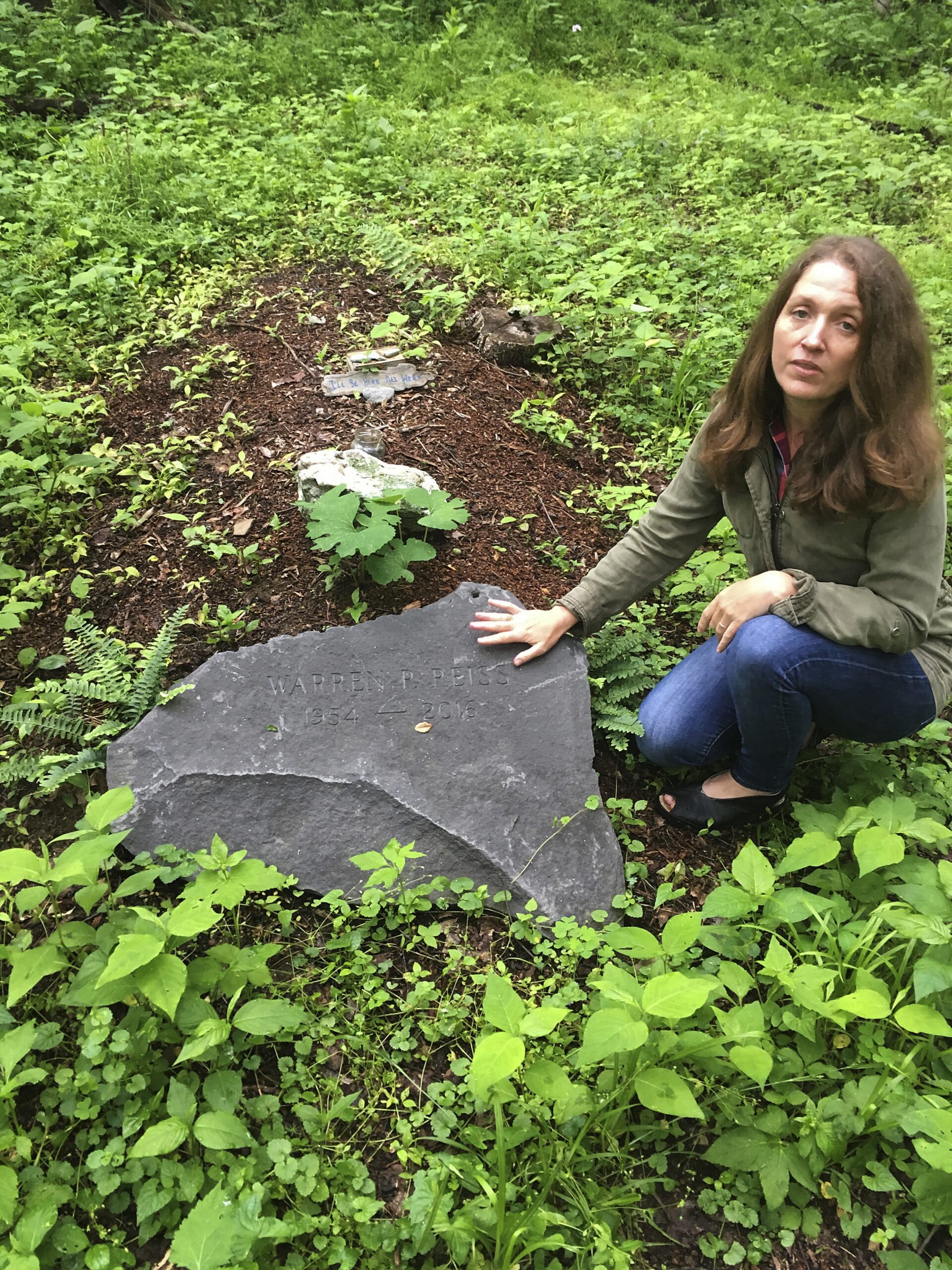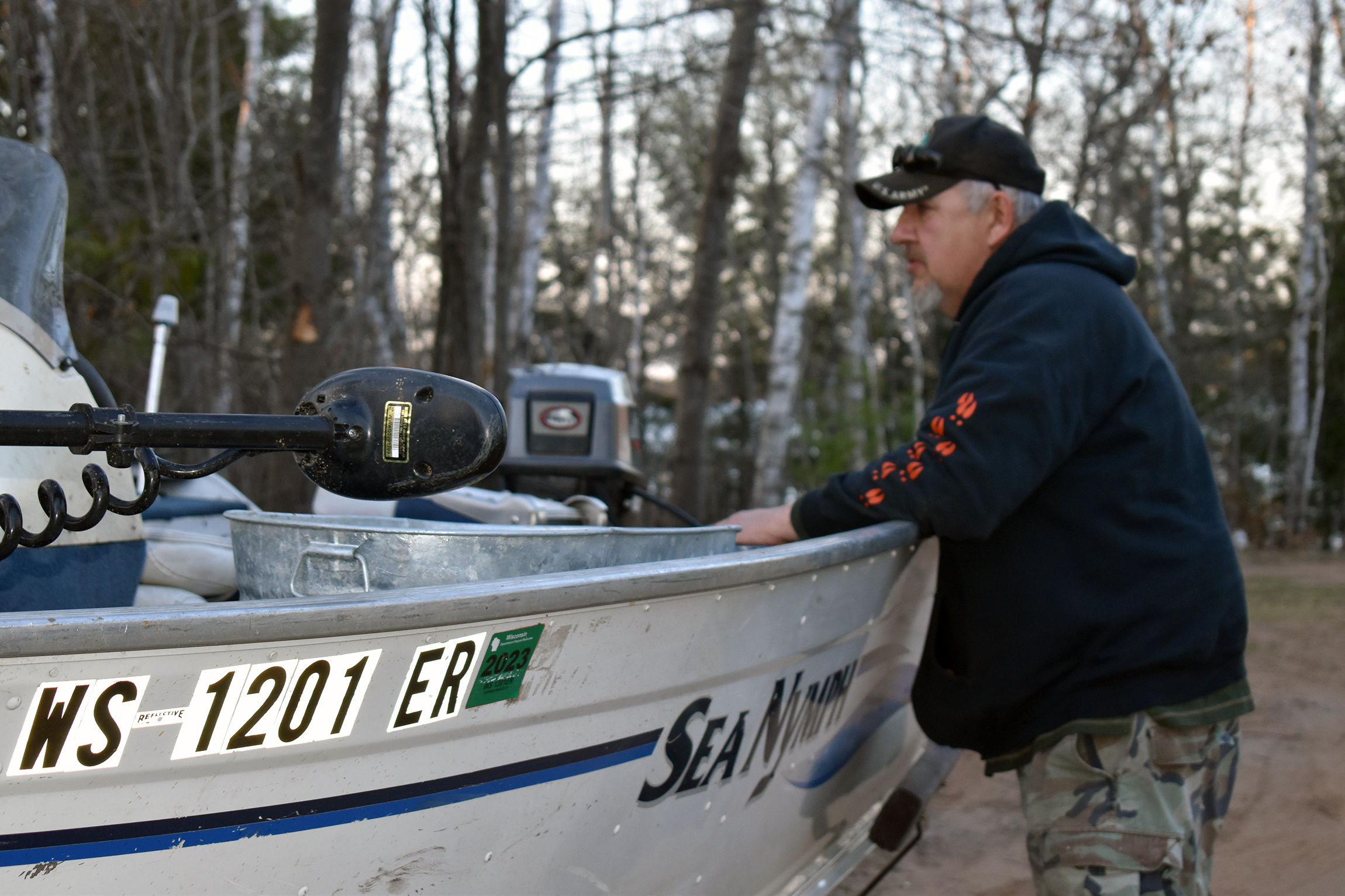Environmental groups are filing a lawsuit against the state’s water diversion plan for the planned Foxconn facility in Racine County. We discuss the impact the project would have on Great Lakes water and the reasons for the legal action. Plus, new research shows that older adults with autism spectrum disorder may be at greater risks for developing problems like cardiovascular, respiratory and digestive issues. We hear from the lead author about how they used a form of artificial intelligence in their research. We also talk with the author of a green burial guidebook about options for a more environmentally friendly burial method.
Featured in this Show
-
A Look At The Lawsuit Challenging Foxconn's Water Diversion Plan
Groups concerned about the state’s approval of a water diversion plan for the Foxconn facility have filed a legal challenge to the policy. We discuss what impact the project would likely have on Great Lakes water, and the reasons for the legal action.
-
Eco-Friendly Burials Reflect Old Interment Practices
Options for green living extend to the afterlife.
Green burials, an ever-growing option among those looking to reduce their carbon footprint and save money in the process, focus on natural burial methods instead of embalming and treating the body with chemicals to preserve it.
In green burials, bodies are buried with natural, biodegradable material so they decompose into the dirt instead of being buried in a concrete box or steel grave liner.
The National Funeral Directors Association reported in 2017 that more than 50 percent of respondents to a consumer survey said they’re interested in green funeral options, an option seventh-generation mortician Elizabeth Fournier details in her book, “The Green Burial Guidebook.”
Fournier, owner and operator of Cornerstone Funeral Services in Boring, Oregon, said what is now considered a green burial was actually common practice before the Civil War. She said women as “layers of the dead,” used to prepare their loved ones by bathing, dressing and singing to them before putting the bodies in the funeral parlor in the front room of the house.
After the Civil War, when men’s bodies needed to be returned home for services, embalming became common practice, and it helped usher in the era of funeral homes.
“We had goods and services, and basically everything progressed, where taking care of the nature and doing things simple sort of regressed,” Fournier said.
Alternative Options
While cremations may seem like eco-friendly options and have gained popularity, especially among the Baby Boomer generation, they’re not green, Fournier said.
Cremations are expected to increase from about 50 percent in 2016 to nearly 80 percent in 2035, according to the National Funeral Directors Association. That means an expected 2.8 million dispositions would be by cremation, up from 1 million in 2010. In Wisconsin in 2018, 33 percent of dispositions were burials and 61 percent were cremations, the report shows.
But cremations produce fossil fuel waste. One cremation can emit 880 pounds of carbon dioxide and other pollutants, such as mercury. Moreover, the energy used to perform a cremation is equivalent to a 500-mile car trip, Reuters reported. Starting the afterburner, or crematory, to get the temperature up to 1,800 degrees Fahrenheit to cremate a body is an example of where high energy use is required.
There are other options to dispose of human remains — for example, aquamation, or alkaline hydrolysis, dissolves human remains and leaves the bone, which can then be crushed into ash.
“We’re really broadening our parameters of what we can do to keep it eco-friendly,” Fournier said.
But that option is technically legal in 13 states, and Wisconsin isn’t one of them.
A Cheaper Option
According to the Funeral Consumers Alliance, the cost for green burials varies by the type of site. A grave site and the burial ceremony can cost from $1,000 to $4,000 for a body. The cost is less, from $200 to $1,000, for cremated remains. The cost could increase with additional funeral home prices, with some charging more than $5,000 for a green burial with a pine casket, according to the alliance.
“A price of about $2,000 is more typical, though still high,” the website states, noting that consumers should see comparable prices for green burials and direct burials, which are often the most affordable option. “Shop around among several funeral homes to find the most affordable price.”
Family members and loved ones can save money by building caskets themselves. Green materials include plain wood, cardboard or wicker. Wrapping the deceased in a favorite blanket or quilt made from natural materials such as cotton or wool are also options.
“A shroud doesn’t have to be something that somebody hand-sewn or you bought off the internet,” Fournier said. “This can be a piece of material from the fabric store.”
Next Steps
People interested in green burials should first decide where they want to be buried, Fournier said, noting that Wisconsin has several sites devoted to green burials or that include space for green burials among the more modern cemetery setting. It’s also legal for people to bury their loved ones on their own land, but people should check with their local ordinances for details on what would be required to do that.
“Wisconsin is one of those fantastic states that is really open to traditional burial and modern burial and just making people have as many choices as possible,” she said.
Also, families should be notified if someone is interested in a green burial for themselves.
“It’s important that you discuss with your family what you want and if you do want a green burial, is everybody on board,” Fournier said.
She said families need to establish who will be driving the body to the burial site, how the loved one will be buried and what to do if the burial happens quicker than expected or during the winter when the tundra is frozen.
“Things sometimes happen,” she said. “Be easy on yourself because sometimes your family or whomever just can’t make it happen, an that’s just OK.”
-
Burials That Are Environmentally Friendly
Green burials may seem like a new movement, but in fact, it’s going back to the way that we buried our dead for thousands of years. We’ll talk about options today for more eco-friendly end of life arrangements, and what is legal in Wisconsin.
-
New Study Connects Adults With Autism Spectrum Disorder To Higher Risk Of Other Health Issues
New research from the University of Wisconsin-Madison Waisman Center found that adults living with autism spectrum disorder may face a higher risk of developing certain health issues — like cardiovascular, respiratory and digestive problems — than the rest of the population.
While the number of older adults diagnosed on the autism spectrum has increased in recent decades, autism research primarily focuses on children and adolescents.
“When we were going into this study we thought that we might see a couple of things that were elevated … what we didn’t expect is that we would see either similar or higher prevalence of almost all things except for cancer and hypertension and alcohol abuse,” said Lauren Bishop-Fitzpatrick, lead author of the study.
Researchers used machine learning — a form of artificial intelligence — to analyze data that came from the electronic health records from the Marshfield Clinic in central Wisconsin of people with autism who had died.
“We’ve known for a long time that people on the spectrum have high rates of things like epilepsy and digestive problems,” Bishop-Fitzpatrick said. “But in this sample we were able to see that they also had really high rates of cardiovascular problems, as well as motor problems, ear problems and infections.”
The researchers compared the health records of 91 people with autism to more than 6,000 people without from the same region — a roughly equivalent ratio to what the Centers for Disease Control and Prevention estimates as the rate of autism in the U.S.
Researchers then used an algorithm that can identify health patterns that may distinguish people on the spectrum from the general population, she said.
“This is the first study, that we know of at least, to look at the health histories of people on the autism spectrum,” Bishop-Fitzpatrick said. “So we had a lot of data to look at this sample of people.”
Autism diagnosis saw a boom in the 1990s, but the diagnostic history of autism is relatively brief, she said. The first person ever diagnosed with autism spectrum disorder is in his 80s.
“At this point we know very little about the types of outcomes that people on the autism spectrum have in midlife, in old age,” she said. “We’ve heard for many, many years from families that people on the spectrum have different types of health problems.”
They also have different challenges in seeking and receiving care, Bishop-Fitzpatrick said. Those with autism spectrum disorder can experience sensory, environment and communication challenges by virtue of their condition, she said.
“All of these things really coalesce in a way that could be really disadvantageous to people on the spectrum in health care settings,” she said.
Bishop-Fitzpatrick also notes the level of support they are able to receive when they reach middle age.
“Another really complicated thing about this is that by the time that people on the spectrum reach middle age their parents are likely in old age,” she said. “People on the spectrum might need more support at doctors offices but parents may be unable to provide the same level of support that they were at earlier phases.”
Bishop-Fitzpatrick says in theory they might be able to use a similar method to screen for autism, especially in adults where diagnosis is difficult to come by. Though at this point, research is still in a pilot phase.
“My hope is that we can do more to figure out mechanisms that can help us reach solutions to change the system to help people on the spectrum live better lives for longer,” she said.
-
UW Study Strives To Learn More About Unique Health Needs Of Adults With Autism
A new study published by UW-Madison found that older adults with Autism Spectrum Disorder (ASD) may be at greater risk than people without the disorder for developing certain health issues including respiratory, digestive and more. This study is one of the few studies to focus on the older population with ASD and a big push towards better serving the health needs of adults with ASD. We talk to the lead author of the study.
Episode Credits
- Judith Siers-Poisson Host
- Bill Martens Producer
- Judith Siers-Poisson Producer
- Natalie Guyette Producer
- Chuck Quirmbach Guest
- Elizabeth Fournier Guest
- Lauren Bishop-Fitzpatrick Guest
Wisconsin Public Radio, © Copyright 2025, Board of Regents of the University of Wisconsin System and Wisconsin Educational Communications Board.


